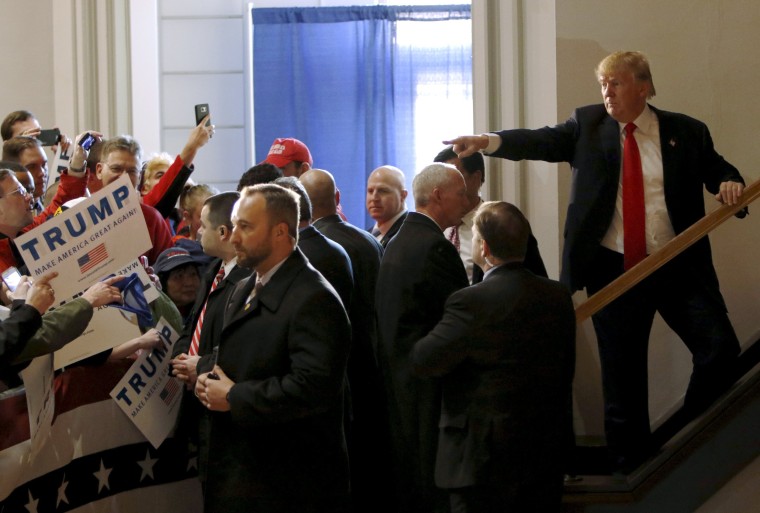Happy New Year, Iowa! Take down those holiday decorations. Make a resolution. And don’t think about politics. Yet.
For the first time in a long time, the Hawkeye State’s first-on-the calendar caucuses won’t come until February, a stark contrast from 2008 and 2012 when they took place in the shadow of New Year’s Day on Jan. 3. In 2016, the candidates will have the entire month of January to make their cases, and and that time shift may have a lot of bearing on the campaign that unfolds in the coming weeks.
In short, the pre-Iowa polls, which often are shaken up greatly after votes are actually cast, mean even less this time around because of that extra month on the calendar.
In the last two presidential elections, the holidays were a brief resting point in the campaign before a quick burst of activity. The presidential race went into semi-hibernation. Then, bang, the race was on again after Iowa.
Consider 2012 and the Real Clear Politics averages for the top three candidates in the days leading up to, then emerging from, the holidays and Iowa.

There’s a good deal of movement in the poll average leading up to Dec. 21, 2012 — businessman Herman Cain actually dropped out of the race — and then relative stability leading into Iowa on Jan. 3. After Iowa’s results and stories of “winners and losers,” things moved radically as one might expect. Remember, New Hampshire follows only eight days after.
There are a number of reasons why movement in the 2012 numbers slowed over the holidays, of course, including less polling over the holidays. But that’s part of the point.
Media coverage is thinner over the holidays as journalists take vacations. And Americans, out of their usual routines, are less likely to spend time thumbing through the newspaper or flipping through the news channels or clicking news links. If nothing else, it is much harder to move the needle for attention during the holidays.
This year, however, that news hibernation won’t lead directly to actual voting. Instead, things will gear up again in January, providing candidates a month-long window to grab the attention of voters tuning into the 2016 campaign — some perhaps for the first time.
What that means, we can’t really know. The last time the Iowa Caucuses were this “late” in the campaign year was 1996, a world before Facebook, smartphones and candidate Donald Trump.
The date change may have a particularly large impact on the good people in the state of Iowa. The last two presidential campaigns have brought Iowans a peculiar mix of holiday merriment and political town hall events. This year, they were able to ignore the political noise and watch the University of Iowa in the Rose Bowl before the inevitable dash to the finish line and awkward candidate diner visits.
And for those of us who live elsewhere, reset your polling clocks. Like so many aspects of the 2016 campaign so far, the calendar is different. We still have more than a month until actual votes are cast. A lot can happen in that time.
